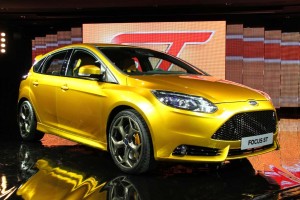
Vibrant versions of traditional colors, such as green, copper and berry, could be in for a comeback.
When it comes to paint colors, motorists are a predictable lot, those staple, if boring, shades of silver, black and white routinely accounting for as much as 80% of the current automotive market. But a new forecast by one of the industry’s leading paint suppliers suggests many buyers might be ready to shift to something a little more exotic.
In its annual forecast of color trends, BASF Automotive Coatings says it anticipates a surge of “naturally cultivated” tones, including “nuanced” berry and copper hues, as well as a return of brown, blue and green – though the latter will be more subtle and organic versions of the traditional earth shades.
“Although popular staple colors such as silver, black and white make up approximately 50 to 80 percent of current production, there is a rich diversity of potential shades that is returning to the market,” said Paul Czornij, Technical Manager for the BASF Color Excellence group. “The increasing inclination of society to celebrate beauty in earth tones and more traditional green and blue hues is the basis for this trend.”

While silver, black and white may rein, researchers believe buyers will seek more expressive colors.
Predicting colors is as much an art as a science and researchers look for all sort of indicators to figure out what shades will connect with consumers, including trends in the fashion industry. But colors also are influenced by factors such as:
- What you drive – demand is very different for sports cars and luxury sedans;
- Where you live – blacks aren’t very popular in Sunbelt states but it’s the color of choice in New York, for example, and Japanese consumers overwhelmingly prefer white;
- Even the state of the economy is a factor, buyers tending to opt for conservative shades during recessions while adopting more vibrant hues when times are good.
Complicating the challenge of forecasting color trends is the fact that it takes several years before the new picks actually make it to market.
Whatever the reason, there are some colors, such as silver and black, that remain strong, year after year. Others, like browns and greens, have their ups-and-downs. BASF researchers see green, in particular, on its way back, and it may reflect the growing interest in environmentalism, suggests Mark Gutjahr, Head of Design for BASF in Europe.
“There are signs from automakers and consumers that the desire for more color on the roads is continuing. We will be tapping into further color spaces, such as bronzes and emeralds,” says Gutjahr. “The continued high value assigned to the notion of ecology may now again be signified by the color green.”
BASF researchers also are betting that color choices will be increasingly influenced by the technologies dominating modern life, such as smartphones. To their mind, that translates into vibrant and powerful colors, such as dark berries and copper.
“We are observing new narrative and haptic qualities in many areas. Heavy substances, striking surfaces and expressive materials such as wood and stone create a stronger emotional connection to the world we live in. In the automotive world, this means that we can expect more intensive colors and bolder effects,” said Corinna Sy, Designer at BASF Coatings Europe. “The new colors are expressive, but not blatant, like a good story.”

As the owner of a 1978 Ford LTD with special order Pale Jade paintwork that always attracts a crowd at old car shows, I’m truly good-and-ready to see America’s parking lots move beyond the bland sea of black, silver, medium gray, dark gray, light gray and taupe that dominates today. How could we embrace this deadly dullness after the riot of two-and-three-tone pastels we were treated to in the 1950s, or the vibrant coppers and autumn colors of the 1970s? If more interesting colors are indeed poised to make a comeback, I will truky fume if automakers decide that the small and sporty cars I can’t fit into should be the only beneficiaries. Traditional sedan buyers deserve some excitement in their paintwork too!
The sad part is that given a rich palette to choose from buyers still overwhelmingly pick from just 3-5 colors, depending upon model segment: silver, black, white and red being by far the leaders. I was very pleased when my own wife choose a dark blue for her convertible last year.
Paul A. Eisenstein
Publisher, TheDetroitBureau.com